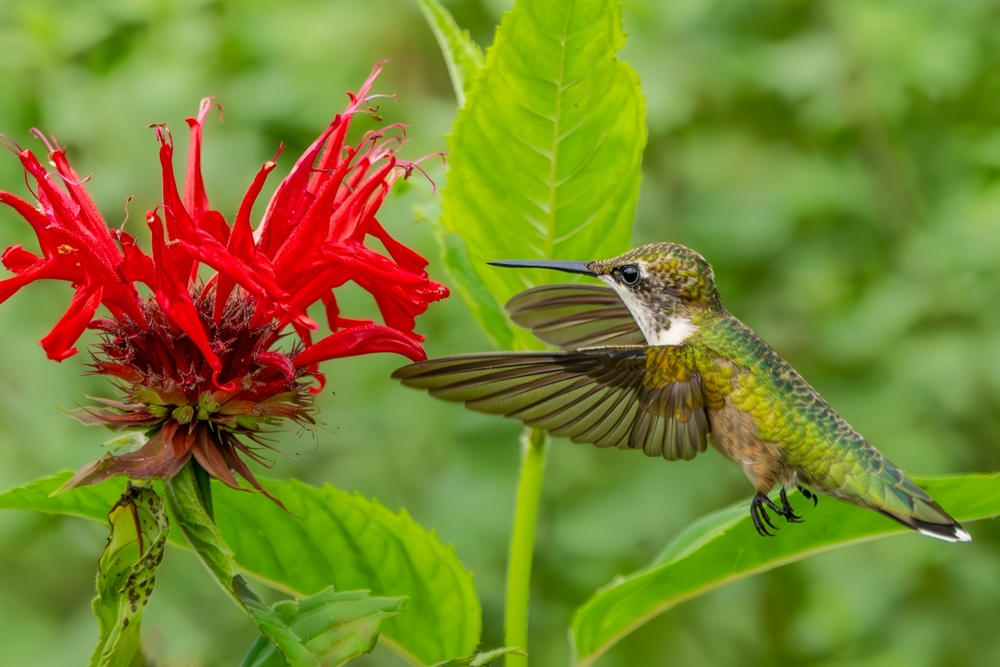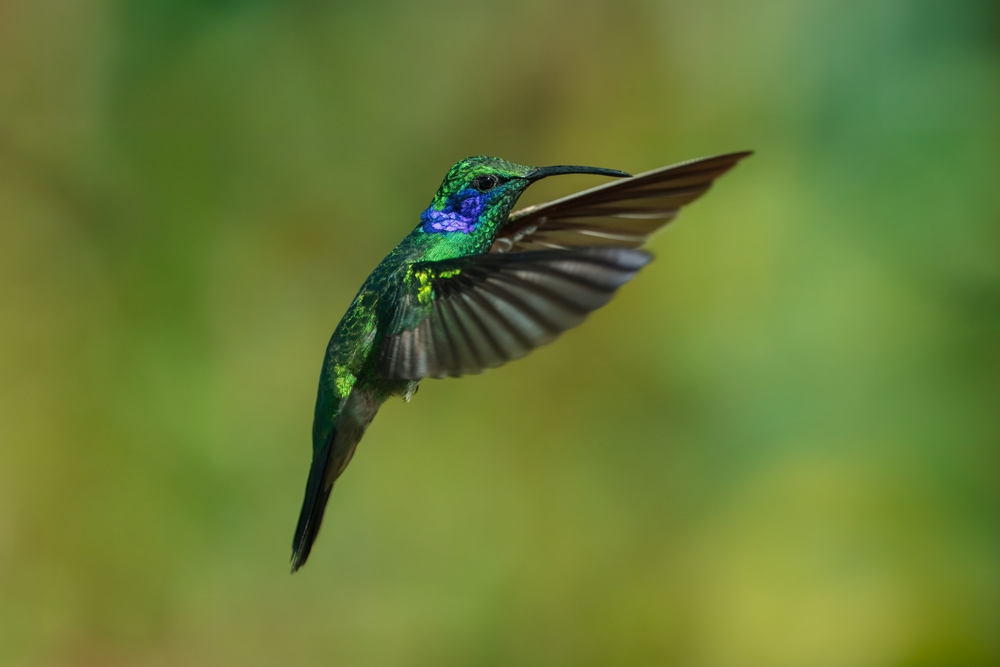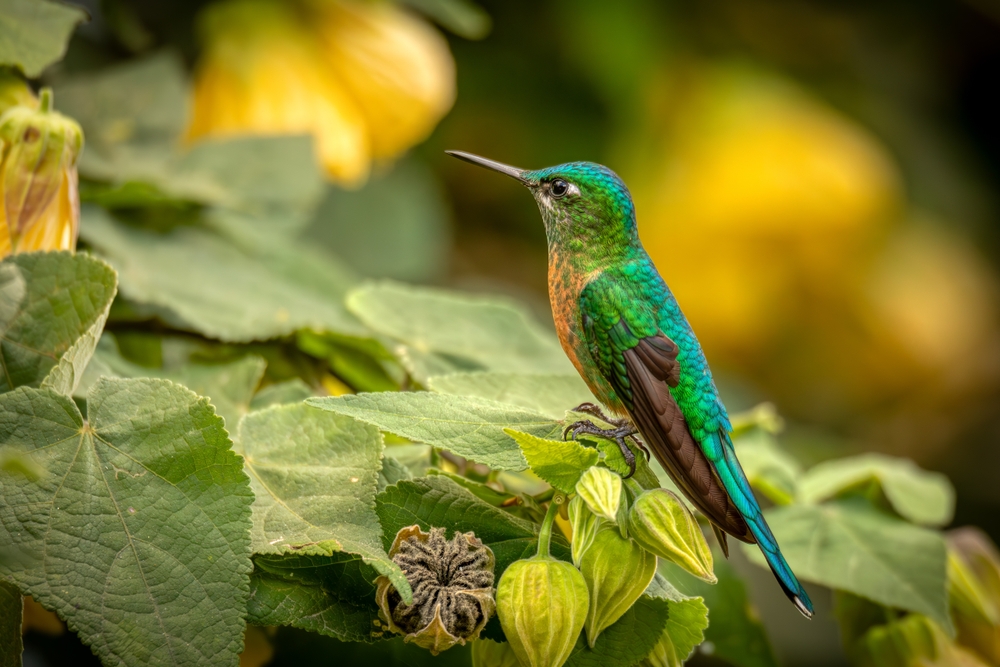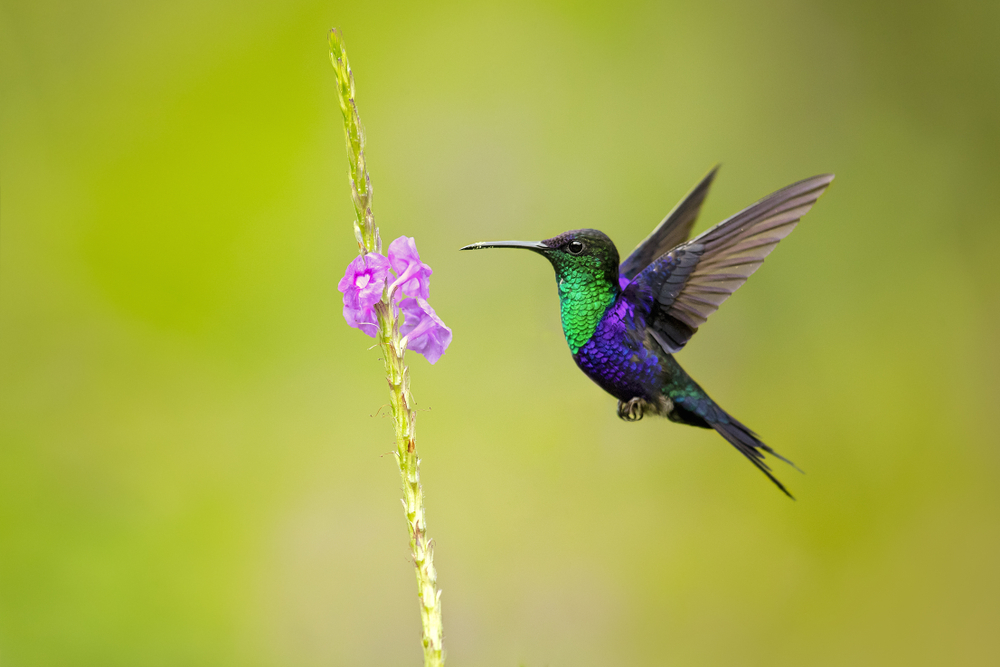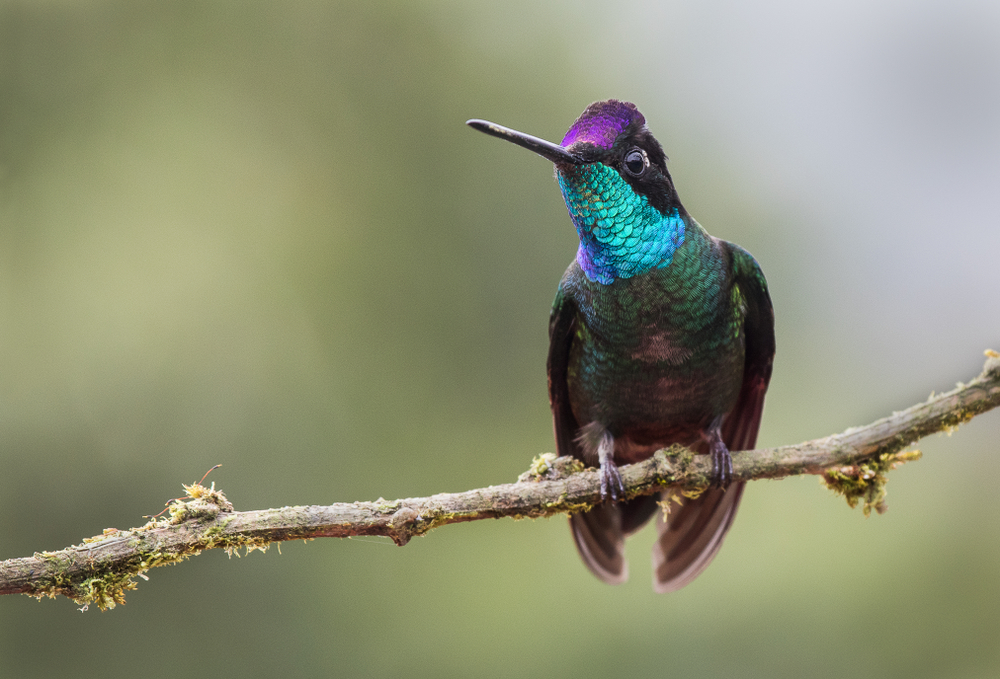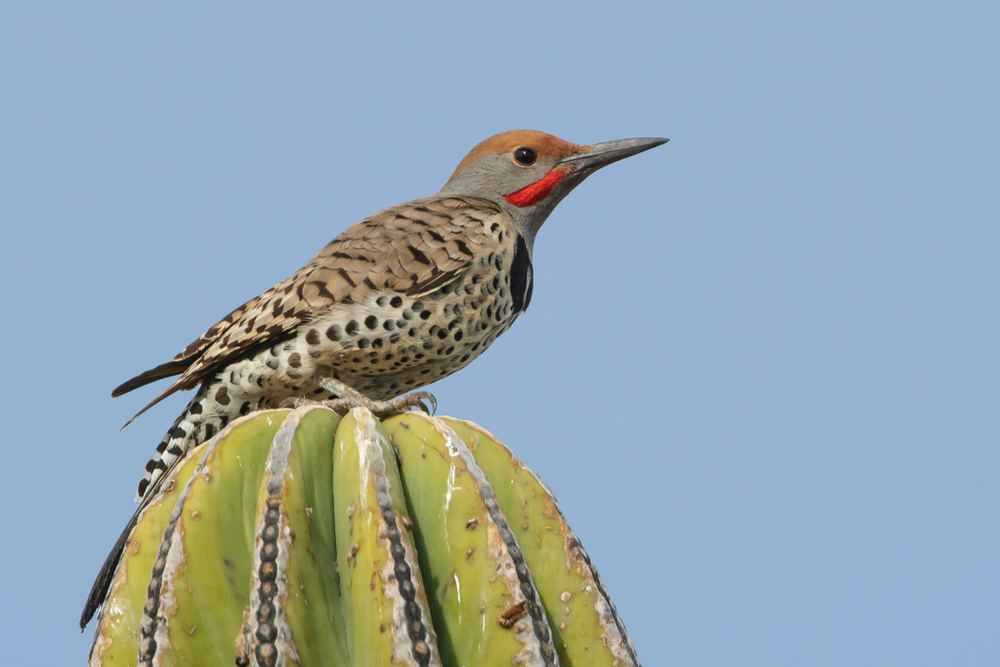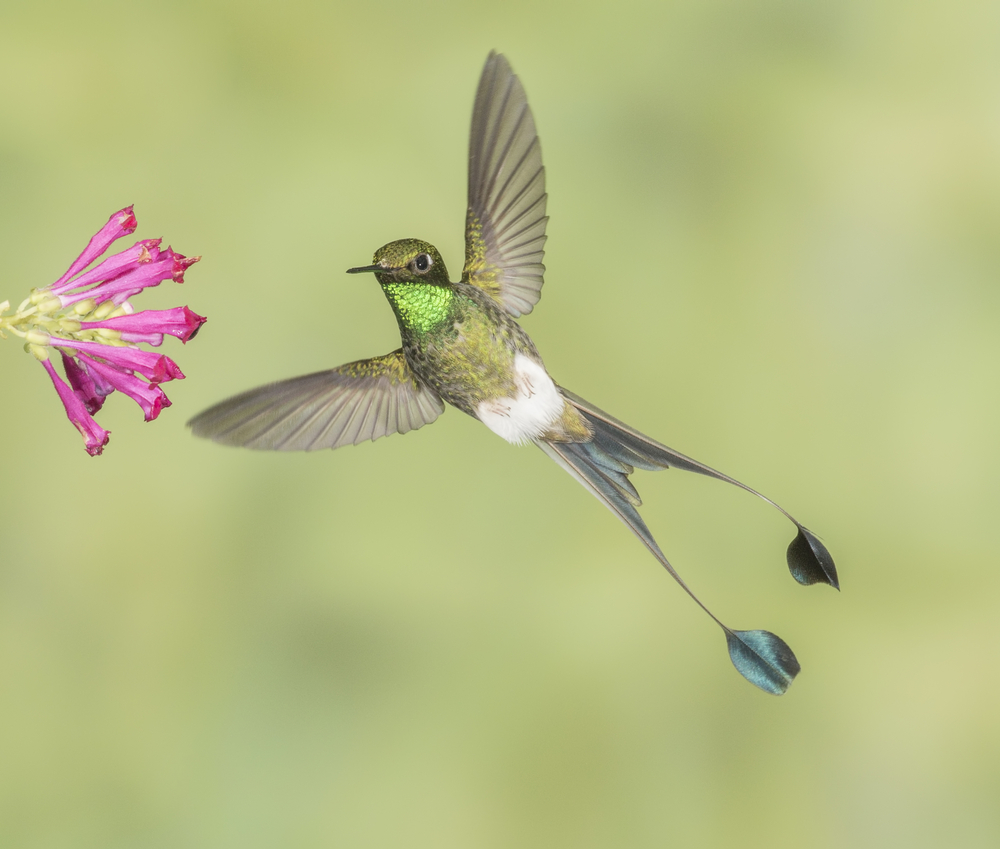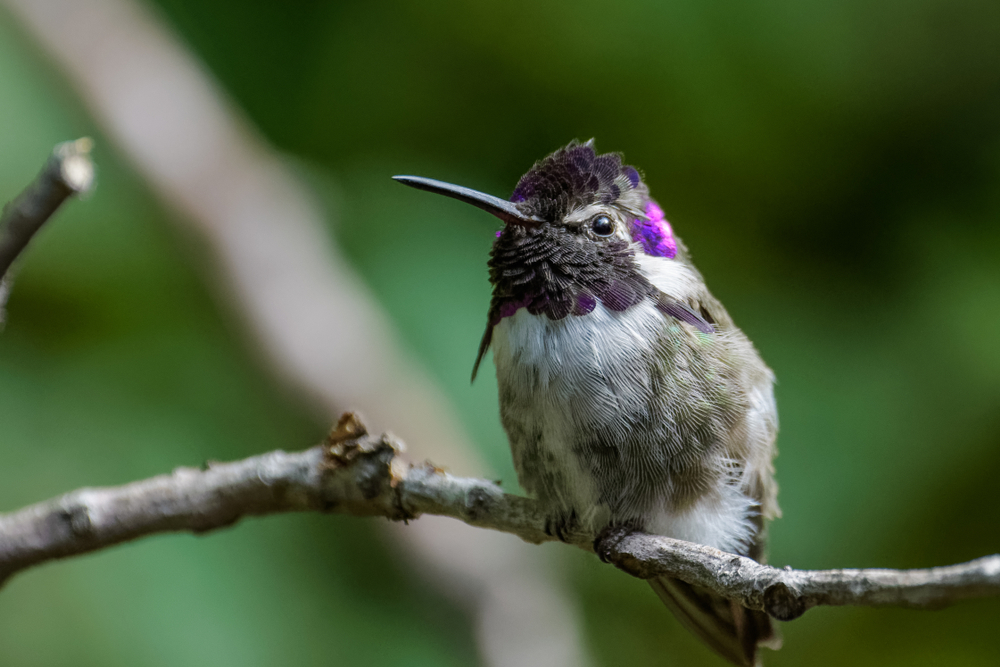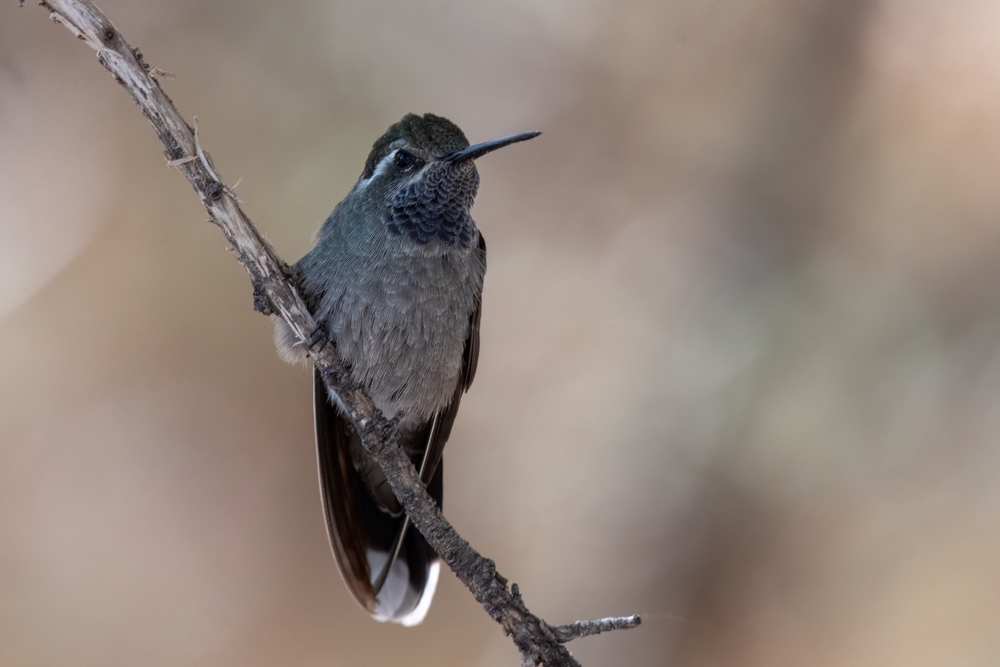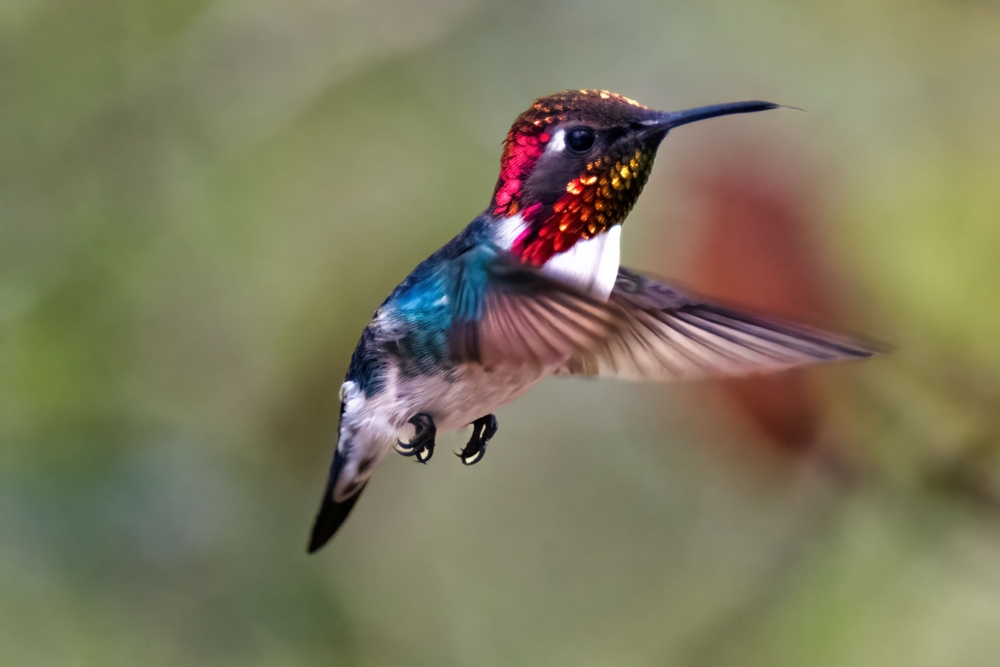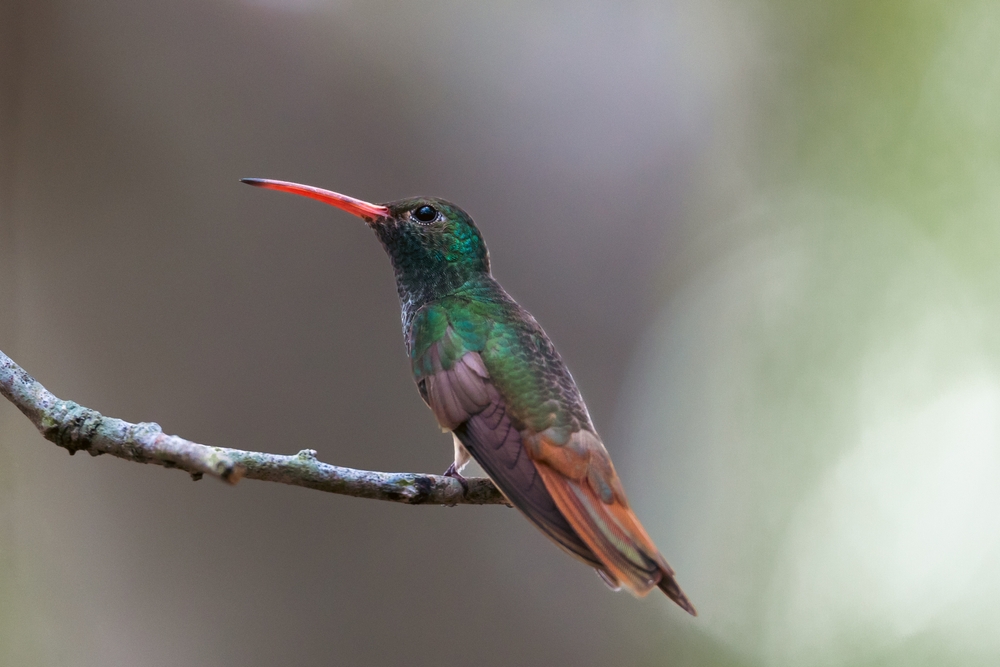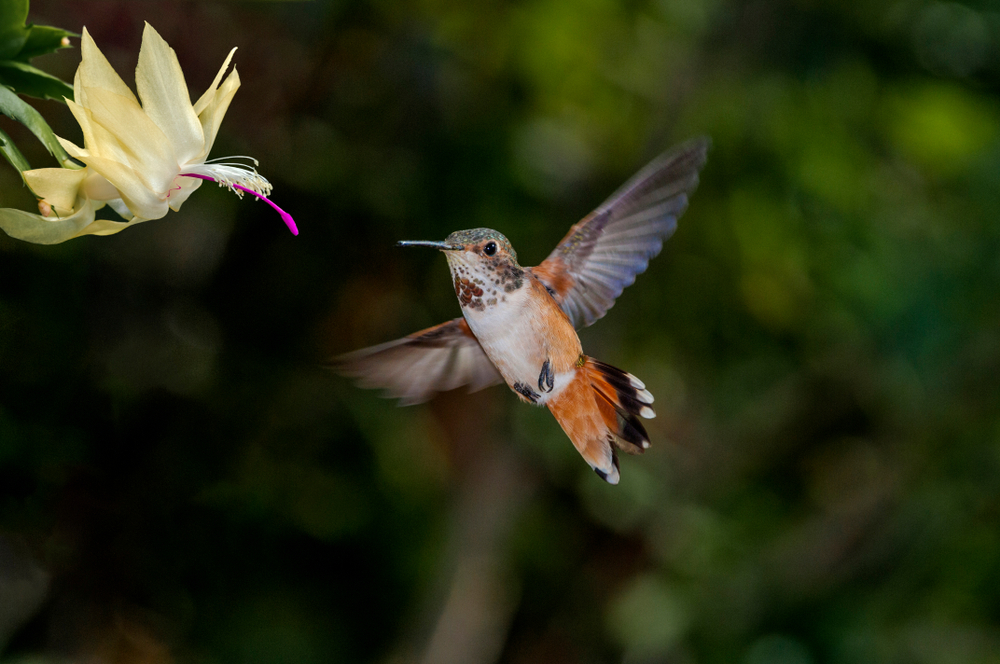The Ruby-throated Hummingbird (Archilochus colubris) is most closely related to the Black-chinned Hummingbird (Archilochus alexandri), its western counterpart. Both share similar size, structure, and behaviors but differ in throat coloration and range.
About
The Ruby-throated Hummingbird (Archilochus colubris) is the most widespread hummingbird in eastern North America and belongs to the family Trochilidae. Known for its dazzling appearance and remarkable migration, it is the only hummingbird species that regularly breeds in the eastern United States and Canada. Each year, millions of these tiny birds travel thousands of miles, with many individuals crossing the Gulf of Mexico nonstop during migration to reach their wintering grounds in Central America.
This small species measures 7–9 cm (2.8–3.5 in) in length and weighs just 2–6 grams. Males are unmistakable, adorned with a brilliant ruby-red throat (gorget) that flashes in sunlight, contrasting with their metallic green back and forked tail. Females and immatures lack the ruby throat, displaying instead white underparts and a green back with a slightly notched tail tipped in white. Their rapid wingbeats, up to 53 times per second, produce a characteristic humming sound that gives the family its name.
Ruby-throated Hummingbirds feed mainly on nectar from a wide variety of flowers, favoring brightly colored, tubular blooms such as trumpet creeper, bee balm, and columbine. They also visit hummingbird feeders filled with sugar water and supplement their diet with insects and spiders, which provide essential protein. Agile and territorial, males aggressively defend feeding areas from rivals.
Breeding occurs in spring and summer. After courtship, the female alone constructs a tiny, camouflaged nest made of plant down, spider silk, and lichens, usually placed on tree branches. She lays two small white eggs and tends the young until they fledge. Males do not participate in nesting.
Though common and widespread, Ruby-throated Hummingbirds face challenges from habitat loss and climate change, which affect flower availability and migration routes. Still, their beauty, agility, and epic migration make them one of the most beloved backyard birds in North America.
Physical Characteristics
Plumage:
The Ruby-throated Hummingbird (Archilochus colubris) is the only breeding hummingbird in eastern North Americaand one of the most familiar species.
-
Male: Brilliant iridescent ruby-red throat (gorget) that can appear black in poor light, metallic green back and crown, and whitish-gray underparts with greenish flanks. The tail is forked and dark with a slight purplish sheen.
-
Female: Lacks the ruby gorget, instead showing a plain whitish throat sometimes lightly streaked. She has metallic green upperparts, white underparts, and a rounded tail with white-tipped feathers.
Head:
Males display a glittering ruby throat that flares brightly when angled toward the sun. The bill is slender, straight, and black, adapted for sipping nectar. The eyes are dark, positioned for keen vision during hovering and foraging.
Body:
Small and streamlined, built for high-energy flight and long-distance migration. The green back provides camouflage among foliage, while the pale underparts help with identification in flight.
Size:
-
Length: 2.8–3.5 in (7–9 cm)
-
Wingspan: 3.1–4.3 in (8–11 cm)
-
Weight: 0.1–0.2 oz (2–6 g), about the weight of a penny.
Feet & Tail:
Feet are tiny, used only for perching, not walking. The male’s forked tail contrasts with the female’s rounded tail with white tips.
Flight Style:
Wingbeats average 50–60 per second, producing a faint humming sound. Males perform U-shaped dive displays in courtship, accompanied by buzzing sounds made by wing feathers. They are strong fliers, capable of migrating over 500 miles nonstop across the Gulf of Mexico.
The Ruby-throated Hummingbird’s tiny size, glowing red gorget, and remarkable endurance make it one of the most iconic and celebrated hummingbirds in North America.
Reproduction
Breeding Season:
Ruby-throated Hummingbirds breed in late spring and summer (April through July) across eastern North America, timed with peak wildflower blooms and insect abundance.
Courtship:
-
Males perform spectacular U-shaped dive displays, rising up to 50 ft (15 m) before diving sharply past a female, producing a buzzing sound with their wings.
-
They also hover in front of females, flaring their brilliant ruby-red gorget in the sunlight.
-
As with most hummingbirds, males do not assist with nesting or raising young after mating.
Nesting:
-
The female alone builds the nest, usually on a tree branch 10–40 ft (3–12 m) above the ground, often in deciduous or mixed woodlands.
-
The nest is tiny, about the size of a golf ball, constructed from plant down, spider silk, and moss, camouflaged with lichens.
-
The elastic silk allows the nest to expand as chicks grow.
Eggs:
-
A clutch contains 2 tiny white eggs, each about the size of a pea (0.5 in / 1.3 cm long).
Incubation:
-
Lasts 12 to 14 days.
-
Only the female incubates the eggs.
Chick Development:
-
Hatchlings are altricial (blind, featherless, and helpless).
-
The female feeds them regurgitated nectar and small insects for protein.
-
Nestlings fledge at about 18 to 23 days, but may remain near the female for another week while learning to forage.
Maturity:
-
Juveniles quickly become independent by late summer.
-
Sexual maturity is reached at about 1 year of age, allowing them to breed the following spring.
The Ruby-throated Hummingbird’s reproduction is notable for the male’s dazzling courtship dives and the female’s remarkable ability to raise chicks entirely on her own.
Lifespan
In the Wild:
Ruby-throated Hummingbirds typically live 3 to 5 years in their eastern North American habitats. As with most hummingbirds, survival rates are lowest during the first year of life due to predation, weather, and migration challenges.
In Captivity:
Rarely kept outside of rehabilitation, but with reliable food and no predators they may live slightly longer, up to 7 to 9 years.
Record Lifespan:
The oldest known Ruby-throated Hummingbird, recorded through banding studies, lived at least 9 years and 1 month—remarkable longevity for such a small bird.
Threats to Longevity:
-
Predation: At risk from hawks, kestrels, larger birds, snakes, and domestic cats.
-
Migration Hazards: They fly thousands of miles annually, including a nonstop 500-mile flight across the Gulf of Mexico, making migration one of their greatest survival risks.
-
Climate Change: Can alter flower bloom times and insect availability, disrupting food sources during breeding and migration.
-
Collisions: Window strikes and entanglement in spider webs or human debris are frequent causes of mortality.
Despite their tiny size, Ruby-throated Hummingbirds are remarkably resilient migrants, returning year after year to the same breeding territories.
Eating Habits
Diet:
The Ruby-throated Hummingbird is primarily a nectar feeder, but supplements with protein from insects and spiders:
-
Nectar: Drawn from tubular flowers such as trumpet vine, columbine, honeysuckle, and cardinal flower.
-
Insects & Spiders: Small flies, gnats, mosquitoes, aphids, and spiders provide protein, vital for chick growth.
-
Sap: Occasionally feeds at sapsucker wells, drinking sap and catching insects trapped in it.
Foraging Behavior:
-
Uses its long, extendable brush-tipped tongue to lap nectar at up to 13 licks per second.
-
Employs a trapline strategy, visiting flowers in a repeated sequence rather than defending a single patch.
-
During migration, often visits backyard feeders for sugar water, which provides vital energy.
-
Catches insects by hawking (darting from perches to grab them midair) or gleaning from spider webs and leaves.
Feeding Adaptations:
-
High metabolism requires near-constant feeding, consuming up to half its body weight in food each day.
-
Enters torpor on cold nights to conserve energy, lowering body temperature and metabolism.
-
Excellent memory helps track flower locations and nectar replenishment cycles.
Role in Ecosystem:
Ruby-throated Hummingbirds are critical pollinators for many wildflowers in eastern North America, transferring pollen as they feed. Their insect hunting also helps regulate small insect populations.
The Ruby-throated Hummingbird’s nectar dependence, long migrations, and trapline foraging make it both a vital pollinator and a resilient long-distance traveler.
Uniqueness
Only Eastern Breeder:
It is the only hummingbird species that breeds in eastern North America, filling a niche unoccupied by any other hummingbird.
Brilliant Ruby Gorget:
Males flash an iridescent ruby-red throat patch, which can look black until sunlight catches the feathers, producing a dazzling glow.
Epic Migration:
Despite weighing only 2–6 g, they migrate thousands of miles yearly, including a nonstop 500-mile flight across the Gulf of Mexico, one of the most remarkable feats in the bird world.
Trapline Foraging:
Instead of defending large flower territories, many Ruby-throated Hummingbirds follow trapline routes, visiting the same flowers in sequence to maximize efficiency.
High-Speed Metabolism:
Their hearts can beat up to 1,200 times per minute, requiring them to feed almost constantly. To survive cool nights, they can enter torpor, drastically lowering their metabolism.
Familiar Yet Unique:
As the most common hummingbird east of the Mississippi, they are often people’s first introduction to hummingbirds, making them a cultural and ecological icon.
The Ruby-throated Hummingbird’s combination of exclusive range, dazzling plumage, and astonishing migratory endurance makes it one of the most unique and celebrated birds in North America.
Be the First to Share Photos of This Species.
FAQ’s
1. What is the closest species to the Ruby-throated Hummingbird?
2. How does the Ruby-throated Hummingbird compare to other hummingbirds?
It is the only hummingbird to breed in eastern North America, making it unique among its family. While many hummingbirds defend large territories, Ruby-throateds often use trapline foraging. They are also among the most remarkable migrants, capable of a nonstop flight across the Gulf of Mexico.
3. What national parks provide the best opportunities to see a Ruby-throated Hummingbird?
They are best seen in eastern U.S. national parks such as Great Smoky Mountains National Park (Tennessee/North Carolina), Shenandoah National Park (Virginia), and Congaree National Park (South Carolina), where wildflowers attract them during breeding and migration.



































































